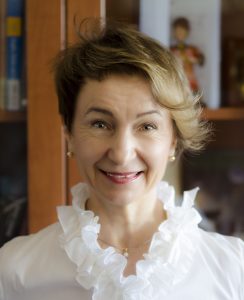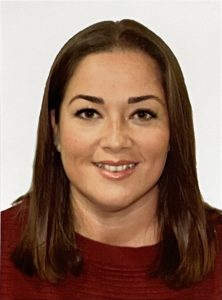Vilém Novák – Radko Mesiar – Irina Perfilieva – Maria Eugenia Cornejo Piñero
Vilém Novák
 Prof. Vilém Novák, Ph.D., DSc. is the director of the Institute for Research and Applications of Fuzzy Modeling of the University of Ostrava, Czech Republic. The institute (established in 1996) is one of the world-renowned scientific workplaces that significantly contributed to the theory and applications of fuzzy modeling.
Prof. Vilém Novák, Ph.D., DSc. is the director of the Institute for Research and Applications of Fuzzy Modeling of the University of Ostrava, Czech Republic. The institute (established in 1996) is one of the world-renowned scientific workplaces that significantly contributed to the theory and applications of fuzzy modeling.
V. Novák obtained a PhD in mathematical logic at Charles University, Prague in 1988; DSc. (Doctor of Sciences) in computer science in the Polish Academy of Sciences, Warsaw in 1995; full professor at Masaryk University, Brno in 2001. His research activities include mathematical fuzzy logic, approximate reasoning, mathematical modeling of linguistic semantics, fuzzy control, analysis and forecasting of time series, and various kinds of fuzzy modeling applications. He belongs among pioneers of the fuzzy set theory.
He was general chair of the VIIth IFSA’97 World Congress, Prague and of the international conferences EUSFLAT 2007, Ostrava and EUSFLAT 2019, Prague. He is a member of editorial boards of several scientific journals. He is often invited to give plenary talks at international conferences and to give university lectures all over the world.
He is the author or co-author of 5 scientific monographs, two edited monographs, and over 290 scientific papers with over 7000 citations. He was awarded in the International Conference FLINS 2010 in China and obtained the title “IFSA fellow” in 2017 for his scientific achievements. He is currently the vicepresident of IFSA.
Title: On fuzzy natural logic and its applications
Abstract: L. A. Zadeh, the founder of the fuzzy set theory, demonstrated in many of his papers that his approach makes it possible to develop a unique mathematical model of the semantics of some expressions of natural language and to apply it in solution of various practical problems. Recall one of the most successful applications | the fuzzy control in which control is realized by transforming operators (i.e., expert) knowledge formulated in natural language into an algorithm.
The fundamental role in these applications is played by expressions of natural language such as «small, very weak, medium, extremely large, significantly expensive» etc. Recall that they form a special class of linguistic expressions called evaluative linguistic expressions. In this talk, we will place them into a wider program of the so-called Fuzzy Natural Logic (FNL). Its goal is to develop a mathematical model of human reasoning whose typical feature is the use of natural language. Among results of FNL, besides the theory of evaluative expressions, belongs also sophisticated theory of intermediate (linguistic) quantifiers, or a special inference method called Perception-based Logic Deduction (PbLD), which provides the algorithm that behaves as if \understanding» linguistic expressions.
Besides the above theory, we also mention applications of FNL in control, multiple-criteria decision-making, forecasting, and mining information from time series.
Radko Mesiar
Title: Outliers-based aggregation
Abstract: Inspired by the basic fuzzy connectives min
(t-norm TM ) and max (t-conorm SM ), we introduce
and study outliers-based extended
aggregation functions. Simply said, A is
an (a,b)-outliers-based extended aggregation
function if for each arity n ≥a + b, its
output values depend on the number a of
minimal and b of maximal input values only. We
focus on associative outliers-based extended
aggregation functions, including t-norms, t-conorms,
uninorms, nullnorms, as well as on
outliers-based extended OWA operators and
related outliers-based extended aggregation
functions. Also, some distinguished integrals are considered.
Observe that there is unique (1,0)-outliers-based t-norm,
namely the strongest t-norm TM, but plenty of (2,0)-outliers-based
t-norms, including the drastic product TD and the nilpotent
minimum TnM, among others. Results for t-conorms are obtained
by duality, which changes (a,b)-outliers case into the
(b,a)-outliers case. These results help also in characterization
of outliers-based uninorms and nullnorms.
Irina Perfilieva
 Prof. Irina Perfilieva, Ph.D., received the degrees of M.S. (1975) and Ph.D
Prof. Irina Perfilieva, Ph.D., received the degrees of M.S. (1975) and Ph.D
(1980) in Applied Mathematics from the Lomonosov State University in Moscow, Russia. At present, she is full professor in the University of Ostrava (CZ) and a Head of Theoretical Research Department in the Institute for Research and Applications of Fuzzy Modeling (IRAFM). She is: the author and co-author of six books on mathematical principles of fuzzy sets, fuzzy logic and their applications; area editor of International Journal of CIS (IJCIS), Soft Computing, editorial board member of the journals: Fuzzy Sets and Systems, Journal of Uncertain Systems, Journal of Intelligent Technologies and Applied Statistics, Fuzzy Information and Engineering. She works as a member of Program Committees of the most prestigious International Conferences and Congresses in the area of fuzzy and knowledge-based systems. She received the memorial Da Ruan award at FLINS 2012 and the best paper award at IFSA 2019. She is an EUSFLAT Honorary Member, and the IFSA Fellow. She received a special price at the 2010 Seoul International Invention Fair and several awards for the best paper, IFSA 2019 as the last. She has two patents.
Her scientific interests lie in the area of applied mathematics and mathematical modeling where she successfully uses modern as well as classical approaches. For the past five years, she has been working in the field of image processing, pattern recognition and the theoretical foundations of deep learning.
Title: Data-Driven Fuzzy Modeling Inspired by Manifolds
Abstract: The talk will focus on efficient data-driven modeling associated with the inverse problem and feature extraction. We show how the theories of 1-manifolds and F-transforms contribute to these delineated areas.
The manifold hypothesis states that the shape of observed data is relatively simple and that it lies on a low-dimensional manifold embedded in a higher-dimensional space.
We contribute to the problem of manifold learning. We show that a space whose topological structure is characterized by a fuzzy partition naturally leads to so called Riemannian spaces or Riemannian manifolds.
María Eugenia Cornejo Piñero
 M. Eugenia Cornejo is Assistant Professor at the Department of Mathematics, University of Cádiz, Cádiz, Spain. She received the M.S. degree in mathematics in 2010 from the University of Cádiz, Spain, and the Ph.D. degree in mathematics in 2015 from the University of Cádiz, Spain. She has participated as a researcher in national projects and research contracts with companies. Currently, she co-leads a national project and a working group of the COST Action DIGital FORensics: evidence Analysis via intelligent Systems and Practices (DigForASP) – CA17124. Her research areas of interest are fuzzy sets, fuzzy logic, logic programming, relational data analysis, fuzzy relation equations and algebraic structures for soft computing. She has published more than 60 papers presented at conferences and scientific journals, including the Journal of Computational and Applied Mathematics, Information Sciences, International Journal of Approximate Reasoning Fuzzy Sets and Systems, and Transactions on Fuzzy Systems.
M. Eugenia Cornejo is Assistant Professor at the Department of Mathematics, University of Cádiz, Cádiz, Spain. She received the M.S. degree in mathematics in 2010 from the University of Cádiz, Spain, and the Ph.D. degree in mathematics in 2015 from the University of Cádiz, Spain. She has participated as a researcher in national projects and research contracts with companies. Currently, she co-leads a national project and a working group of the COST Action DIGital FORensics: evidence Analysis via intelligent Systems and Practices (DigForASP) – CA17124. Her research areas of interest are fuzzy sets, fuzzy logic, logic programming, relational data analysis, fuzzy relation equations and algebraic structures for soft computing. She has published more than 60 papers presented at conferences and scientific journals, including the Journal of Computational and Applied Mathematics, Information Sciences, International Journal of Approximate Reasoning Fuzzy Sets and Systems, and Transactions on Fuzzy Systems.
Title: Adjoint algebras. Theory and applications.
Abstract: One important goal for obtaining useful information from databases is to select the most suitable operators to be considered in the computations. The more versatile and tractable the operators are, the better can be adapted to the data and so, more knowledge can be extracted. For example, in image processing, the noise is very notable and different general operators such as, pre-aggregations, ordered directionally monotone functions, etc., have been introduced in order to obtain better results. Adjoint triples are other general operators which have been used to introduce flexible tools for defining fuzzy versatile frameworks in logic programming, formal concept analysis, rough set theory, fuzzy relation equations and mathematical morphology. Adjoint triples arise as an interesting generalization of t-norms and their residuated implications, since they preserve their main properties and retain only the minimal mathematical requirements for guaranteeing operability. Specifically, they are tuples composed of an adjoint conjunctor and two residuated implications. Knowing in depth these operators will allow us to solve a larger number of real problems, which clearly highlight the importance of studying this kind of operators
This presentation provides a wide study on adjoint algebras including theoretical definitions and properties, as well as a comparison with other different general (non-commutative) algebraic structures such as sup-preserving aggregations, quantales, u-norms, uninorms and general implications considered in extended-order algebras. In addition, different applications of fuzzy mathematical tools, whose underlying algebraic structure is an adjoint algebra, will be mentioned.

